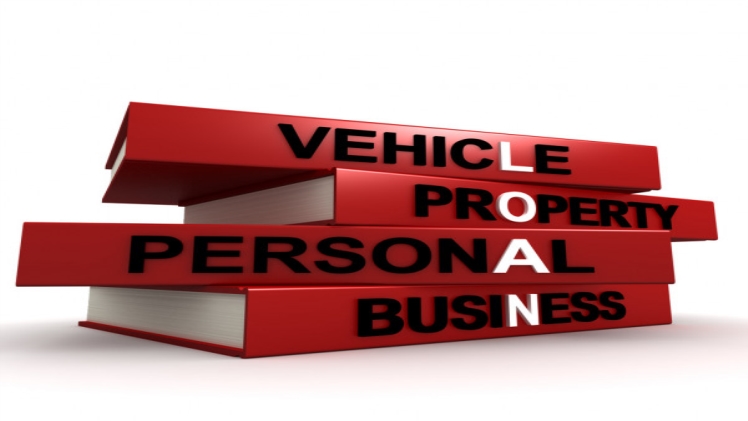Image Source: depositphotos.com
You can kick off the housing project of your dreams by getting a personal loan. You can start any task that needs funding when you can get this kind of loan. That is if you are reliable in paying.
A personal loan can also be ideal for paying for a family trip or combining debt. But, you must also consider a 0% intro APR credit card. If you do this, be sure to pay the balance before the 0% rate ends. To qualify for a personal loan, though, you must first determine whether it is right for you. For example, a car loan may be a better option for borrowing money to buy a car.
Applying for a personal loan might need more of your time and effort. And in this article, we will help you make your time and effort worthwhile.
Read on to know the right way to apply for a personal loan.
Steps in Applying for a Personal Loan
1. Decide how much to borrow.
Not being able to pay back a personal loan is the last thing you or lenders want. While lenders usually do their due diligence, you should be able to repay your debt. It is best if you do your calculations first to make sure it works for you.
First, identify how much you’ll need. Remember that some lenders charge an initial fee. It is where they reduce your loan. So, make sure to borrow enough to get what you need after the payment.
Calculating your monthly payment might be tricky. This is especially if you don’t know what type of rates and payment terms lenders will offer. You can also play around with some figures to get an idea of what the loan will cost you. Then, estimate if your budget can handle it.
2. Check your credit score.
Always check your credit score since most lenders rely on it. Lenders need that you have at least a fair credit score to apply for personal loans. An excellent credit score has the highest chance of approval and will let you score reasonable interest rates.
By visiting AnnualCreditRepot.com, you can have a free credit score report each year. Also, you can have a free copy of your credit report from all credit bureaus every 12 months. If you see any errors, you can contact any primary credit reporting agency to get them fixed.
If you have low credit scores for any reason, you can still have a chance to apply for a loan. Yet, the interest rate might be higher than you want it to be. So take steps to improve your credit score before applying for a personal loan.
3. Know where to get your loan.
Comparing many lenders is essential. It can help you determine which loan works best for you. There’s also plenty of quick-and-easy online loans available and loans from brick-and-mortar institutions.
You can start by searching for lenders that fit your needs. Some lenders have specific loan types, such as medical loans or housing loans. Others also offer low-interest loans.
Also, avoid a payday loan. These kinds of lenders charge interest very high.
How to compare lenders?
Once you’ve done searching for lenders, the next step is to get pre-qualified. Getting pre-qualified is easy, and it doesn’t need any commitments on your part.
Only compare lenders with the same terms if you’re already planning where to get a loan. This is essential since fees and interest rates vary. It is ideal to look at different lenders’ Annual Percentage Rate or APR when making comparisons. The APR considers both the fees and interest rates. It will let you get a better picture of what a loan will cost you.
4. Choose your loan type.
Once you have considered your options and know where your credit score stands, decide which type of personal loan is best for your needs. Some lenders are flexible with their terms on using the funds. Meanwhile, others only approve loan applications if the fund has a specific purpose.
For instance, a lender will allow you to get a personal loan to fund your business. But, other lenders won’t allow you to use borrowed funds for any business purposes at all. So, it is wise to find a lender who will lend you the funds for your exact purposes.
Below are the following different types of loans:
Debt consolidation loans
One of the most common uses for loans is getting another loan to cover your existing debt. You reduce the number of fees you have to worry about every month and get one interest rate.
Credit card refinancing loans
Some lenders specialize in loans for people searching to pay off credit card debt. This is because personal loan rates are sometimes lower than credit card rates. A loan might be a great way to cover your credit card balances and pay them in the long run.
Home improvement loans
It’s the best option to pay for a renovation without taking out any secure home equity loans.
Medical loans
Medical expenses are usually unpredictable. As such, a personal loan might be a great way to reduce the instant financial burden and pay the debt off over the years.
Emergency loans
Emergency loans are essential and valuable for a lot of reasons. For example, minor medical expenses or a car breakdown can be a reason to apply for a personal loan.
Wedding loans
Weddings and vacations are pricey. That is why a lot of people use personal loans to pay them off or finance them. It opens out payments over the years, so you don’t have to worry about paying for special occasions all at once.
5. Check your eligibility.
Visit lender websites or call to see if your financial profile qualifies you for a loan. Locate if there is a least credit score or income needed. Set a minor credit history need and the acceptable debt-to-income percentage.
Get Pre-qualified
After sorting out total loans, focus on lenders most expected to approve you. Several lenders offer soft inquiries to pre-qualify or pre-approved. Pre-qualification or pre-approval doesn’t assure a loan. It only indicates that you fit the lender’s general financial profile.
Pre-qualification includes filling out a form with your information and desired loan amount. The lender will have a credit inquiry and inform you whether you have been pre-qualified for a loan.
Check Out the Details
This time, pre-qualification of the lender. Examine your pre-approval letter and the website for the following:
- Total Loan Amount, Monthly Payment, and Term. It may not be precise, but it will allow you to compare other pre-approved loans.
- Is there an origination fee? How much? And what are the late or missed payment penalties? Any other fees?
- Is the interest rate fixed? Will you have an option, and if so, how much does it cost?
- Secured or not. Is it unsecured or secured? What are the requirements to get a secured loan?
- Auto-Withdrawal. Is automatic monthly withdrawal mandatory or optional? Will your agreeing to automatic withdrawals lower your interest rate?
- Is arbitration required in the event of a dispute, or can you sue the lender?
- Prepayment Fee. What happens in the case of early debt repayment?
- Print it. Even in pre-approval letters, there’s the fine print. Look for unanswered questions or new ideas.
6. Apply for the loan.
Then it’s time to apply for a loan. Apply to many lenders within a 14 to 30 days period. It is also called “rate shopping.” Each inquiry is also handled as one, lowering your credit score.
Your pre-approval letter must state what extra documentation is also required. First, gather your papers. Provide proof of payment, housing costs, debt, a valid ID, and your Social Security number. Then, submit your request and just wait for the results.
7. Provide other necessary documentation.
They may request documentation depending on the lender and your credit score situation. Your latest pay stubs and driver’s license are some acceptable documents. Some will also look for proof of residency.
In this case, the lender will also let you know who needs to see what. You can make a decision as soon as you submit all the information.
Now that you know how to apply for a personal loan, it’s time to shop around for the best rates and fees. You can also source out online lenders that offer payday loans. These loans can answer your immediate money needs. They can usually let you borrow up to $1500, depending on your monthly income. So, if you need some fast cash, this might be the way to go.


